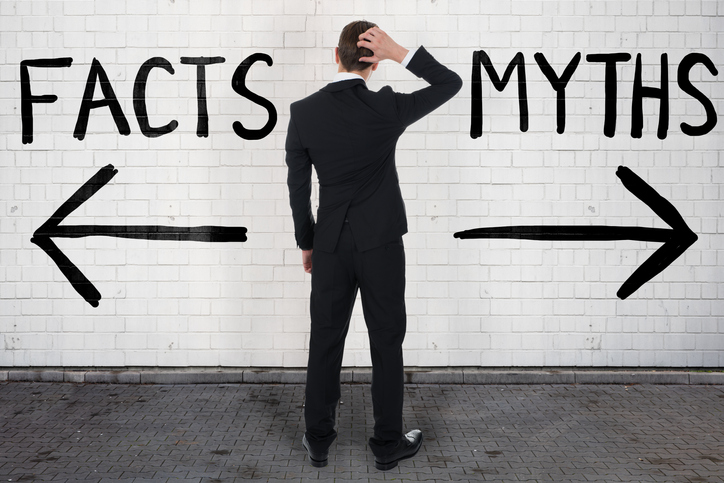
If we're going to get CO2 and other greenhouse gas emissions under control, we can't count on just one solution. Instead, we're likely going to need a variety of strategies, something I refer to as a "portfolio approach". The "portfolio of strategies" may soon get just a little bit bigger, based upon some exciting news out of RMIT University in Melbourne, Victoria, Australia.
Researchers at RMIT recently reported in the journal Nature Communications
that they had successfully turned CO2 into a coal-like solid at room temperature. The news has been reported in scientific journals, various press releases, even in YouTube videos.
It's potentially a big scientific breakthrough, but possibly not. You may recall in the 1980's there were breathtaking reports that two scientists in Utah, Stanley Pons and Martin Fleischmann, had been able generate a nuclear fusion reaction in a test tube at "cold" temperatures. Sadly, the report was premature, and scientists were never able to replicate the experiment.
The RMIT researchers appear to have been much more careful and thorough, however, and appear to have some promising results. Let's take a look at what they did, then address the significance of the experiment.
Dr. Torben Daeneke and his associates conducted the research at RMIT in Melbourne. Their basic idea is to expose air containing CO2 to a bath of liquid metal that also contains the element Cerium. The liquid metal bath served as a catalyst to convert gaseous CO2 into something else. That something else was flakes of carbon. In effect, the catalyst turned gaseous carbon dioxide into solid carbon flakes. Mind you, the flakes were only about 3 nanometers thick. To put that in perspective, a human hair has a width of about 80,000 to 100,000 nanometers, and there are 25.4 million nanometers in one inch. Not exactly a lump of coal, but the researchers confidently reported that it was solid carbon.
More importantly, they also confirmed in the experiment that the carbon flakes did not come from the catalytic agent, or any other external source for that matter. They confidently reported the carbon flakes were definitely a byproduct of the chemical reaction. Obviously, if there was even a small chance that the carbon flakes came from some other source, the experiment wouldn't have been especially significant.
The idea of trying to turn gaseous CO2 into a solid isn't new. A similar type of experiment has been performed previously. However, what is particularly noteworthy about the findings of the RMIT researchers is that their experiment was conducted at room temperature. Previously, other researchers have converted CO2 into a solid, but the experiment was conducted at 600 degrees Celsius (1,112 degrees Fahrenheit). That would be fine if you were either on the planets Mercury or Venus. The average temperature on Venus is 462 degrees Celsius (864 degrees Fahrenheit), and in the case of Mercury, the temperature ranges from -173 degrees Celsius at night to 801 degrees Celsius during the day (-279 degrees to 1,474 degrees Fahrenheit) . Thus, even if you could construct a plant to convert gaseous CO2 to solid carbon on either Mercury or Venus, it could only be operated part of the day.
Of course, remember that the problem we face with excess CO2 is right here on planet Earth. In theory, we could scale up a process to extract CO2 and turn it into coal flakes at 600 degrees Celsius (1,112 degrees Fahrenheit), but the energy required to do that would likely mean no net energy savings. In the process of generating the heat to make the process work, we'd generate as much waste CO2 as we would extract out of the air! By being able to catalyze CO2 at room temperature, it likely won't require lots of energy.
The Melbourne scientists also found that they could create coal flakes in the process without the side effect of "coking", the build up of carbon in the catalyst. That important because if coking occurred, it would cause the conversion to break down due to build up. If "coking" occurred, it would likely be necessary to clean up the coke on a regular basis, thus reducing the production of carbon flakes.
If the RMIT process can be commercialized, it could be a far superior solution. Most of the other approaches to CO2 capture do not involve creating a solid. Instead, these other approaches capture CO2 and either inject the CO2 into liquids (e.g., creating carbonated beverages) or inject it into the Earth. In each case, the CO2 remains in gaseous form. The great fear is that so long as CO2 remains a gas, it could potentially escape back into the atmosphere. Thus, we might capture a high percentage of the excess CO2 in the air by some process and bury it underground, then accidentally have it escape back into the atmosphere. By converting the CO2 gas into a solid, that problem is avoided.
At the same time, in their paper the RMIT researchers hinted at the possibility of using the carbon flakes produced in the process might be useful in making high performance capacitor electrodes. Such electrodes can be used to store energy in a battery. Thus, the RMIT process might offer the dual benefit of removing excess CO2 from the air, as well as helping to create a useful battery storage technology.
Assuming the basic process outlined by the Melbourne researchers can be commercialized, are there adequate raw material resources available? Some high technology involves rare earth metals which are not abundant in Nature. Fortunately, Cerium, the key catalytic element in the experiment, is widely available.
Cerium itself is element 58 in the Periodic Table. It was discovered in 1803 and is named after the asteroid Ceres. It's a soft, ductile silvery metal that is often used because it tarnishes easily. Nevertheless, it's found a range of products. Traditionally, it's been used in the flints of cigarette lighters, the reason being that it will create a spark when you strike it with a match. The only other metal with that property is iron. As there is ever less need for cigarette lighters, those who mine Cerium have fortunately found new uses for the metal, including in flat screen televisions, low energy light bulbs, and floodlights. Cerium is more abundant than tin or lead, but not quite as abundant as zinc.
The other key component of the catalyst is the liquid solution. In this case the Melbourne scientists mixed the Cerium into a gallium based alloy. Such alloys appear ideal for such an application because they are liquid at room temperature, are non-toxic, and are capable of dissolving most other metallic elements, Cerium included.
Thus, the RMIT scientists have found a way to remove CO2 from the air by using a catalyst at room temperature to produce metallic flakes. The process doesn't violate the laws of physics, doesn't require lots of energy, doesn't require the use of lots of highly obsure materials, and can be done at room temperature.
It looks like a promising technology. Of course, Stanley Pons and Martin Fleischmann thought they had a promising cold fusion technology. Unfortunately, no one could replicate their "cold fusion" experiment. The challenge now is to get other researchers to replicate the findings of the RMIT researchers. Let's hope it can be done.
Even if the results can be replicated, that doesn't mean it's ready for prime time. In fact, it might take many years to commercialize the technology. Unfortunately, immediate solutions are needed to remove the 40 or so gigatons of CO2 we're collectively dumping into the atmosphere. If the RMIT continues to be promising, scientists need to pursue two tracks. The first track is to develop a device that can capture air and expose it to the catalytic agent, effectively replicating what's been done in the laboratory. They'll then need to do on-going engineering work to make the device practical at capturing CO2. Not only that, the device will need to be easily manufacturable so that thousands can be deployed around the world.
The second track will be to continue research into alternative catalytic agents to remove CO2.
Given the need to come up in short order with practical ways to remove CO2 from the atmosphere, it could well make sense to run some type of an X Prize competition. The idea is to award a large cash prize to the first team that can produce a commercially viable version of what the Melbourne researchers have developed. The original X Prize was $ 10 million, so why not offer a $ 10 million prize to the first team that builds a device that can take ordinary air, convert a certain percentage of the CO2 from that air into carbon flakes, then packages the carbon flakes for deposit in the ground? To spur competition even more, maybe make the prize bigger, say $25 million? Alternatively, create multiple prizes for various aspects of the problem.
Even if the device can be built, it won't be a panacea. Instead, it can and should be just part of a total portfolio of solutions. Among other parts of the portfolio are photovoltaic cells to capture sunlight, battery storage, and wind turbines.
Two years ago, what the Melbourne researchers have done would have been considered a crazy dream. A commercially viable version of what these researchers have developed remains a dream today, but concerted effort could make it a reality, possibly in short order. The question for policymakers continues to be, how can such research be spurred? It won't be taxes and it won't be government mandates or regulations, the classic recipe offered for solving the CO2 crisis. Instead, it will likely be scientific innovation that is nudged along by proper incentives. What the Melbourne researchers have developed is certainly an exciting first step. We need to help them, and others, take the next step.








